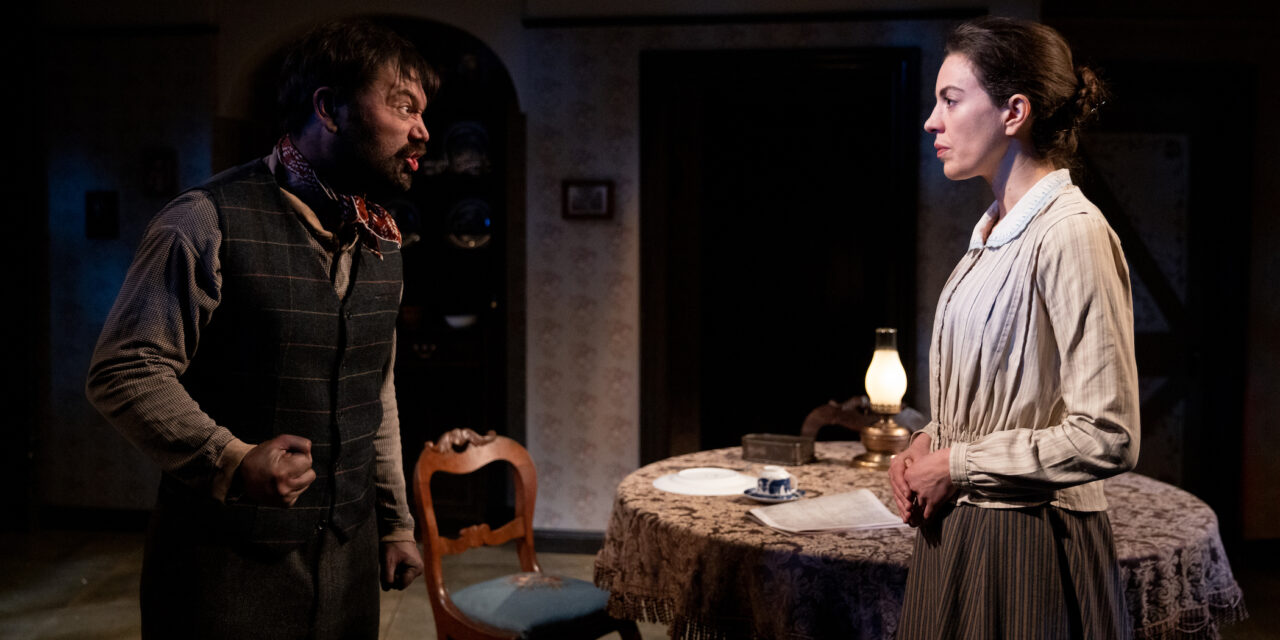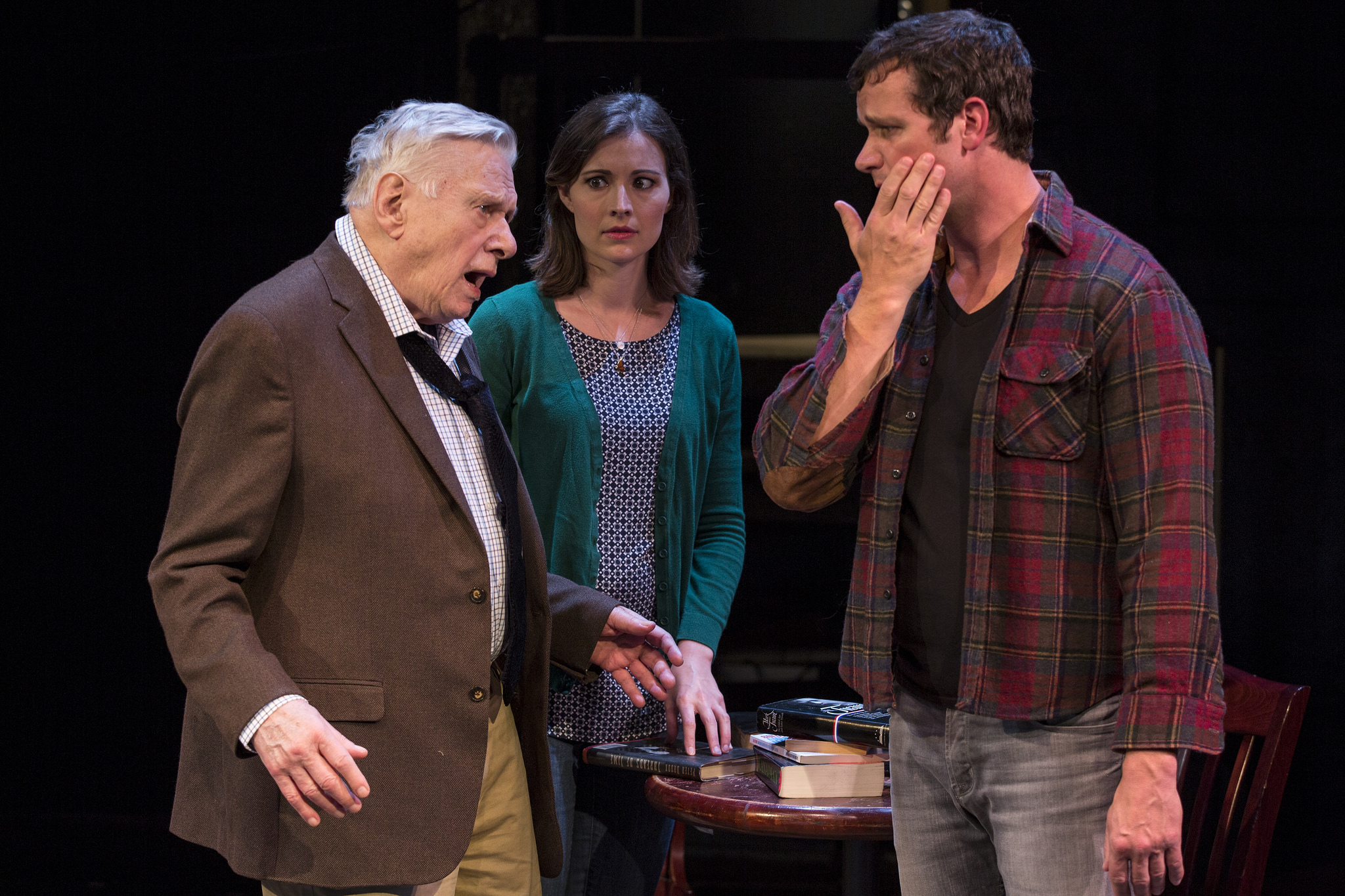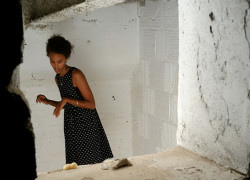By Marilyn Lester . . .
The prolific writer, D.H. Lawrence (1885-1930), was, if nothing else, a man of often baffling complexity. His writing, reflecting his philosophies on things spiritual and sexual, became increasingly bold and explicit. By the time he’d written Women in Love (1920) and Lady Chatterley’s Lover (1928), he was considered by many to be little more than a pornographer. In 1912’s The Daughter-in-Law, a modernist play unproduced until 1965, Lawrence’s notions about sexual politics are the seeds of ideas developed in his later works.
The Daughter-in-Law, artfully directed by Martin Platt for The Mint Theater Company, is a first-rate production. Remarkably acted, and dynamically paced, the creative team has skillfully employed all the arts of stagecraft to keep the focus on character development without distraction—squarely where it belongs. The astute set design (by Bill Clarke) and use of space (it’s played in three-quarter round), enhance the stark and bold telling of a marriage strained by conflicts in class and class aspirations. One caveat: The Daughter-in-Law was written, and is performed in, working class Nottingham dialect. Thanks to coach Amy Stoller, the cast does a magnificent job of mastering this quirky, old English form, but it can take work to attune the ear to it.
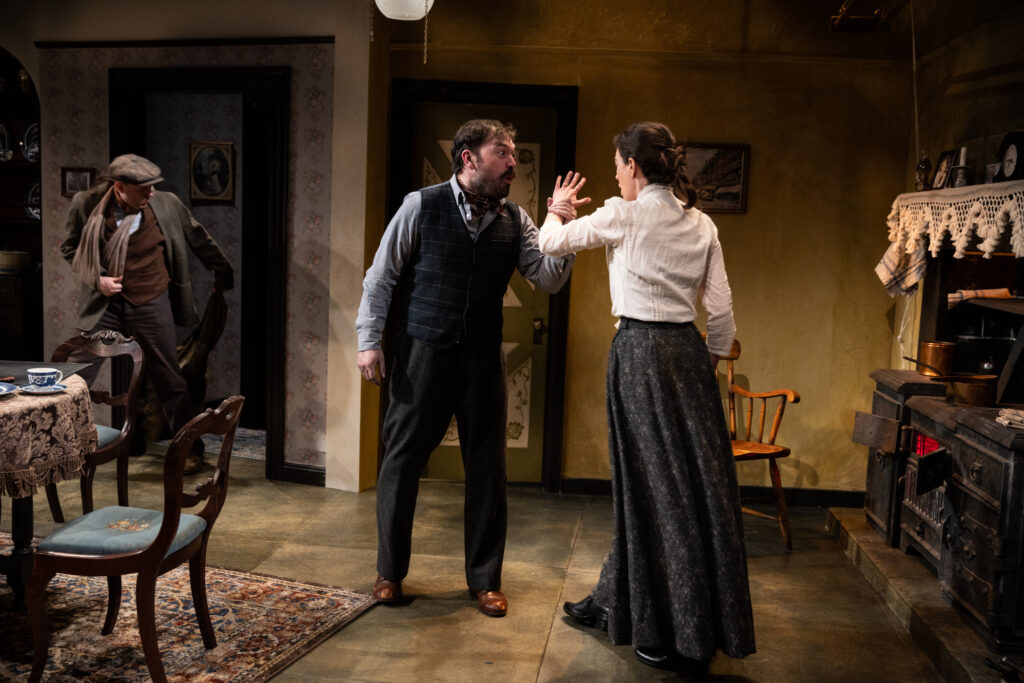
Lawrence was the fourth child of a barely literate East Midlands miner and a teacher mother who’d been reduced to performing manual labor in a lace factory. The Daughter-in-Law was heavily influenced by this backstory and Lawrence’s own relationship with his mother. The plot, set against an impending miner’s strike, begins with the widowed Mrs. Gascoigne (a brilliant Sandra Shipley) and her miner son Joe (Ciaran Bowling) at suppertime in her kitchen. It’s a simple and purposeful scene of ordinary domesticity. Lawrence deliberately wrote The Daughter-in-Law as a tale not out of the ordinary at all. Enter Mrs. Purdy (Polly McKie) who drops in to visit, eventually revealing the plot point that spurs the action of the play. Mrs. Purdy discloses that her daughter Bertha has been impregnated by older Gascoigne son Luther (Tom Coiner) who has recently married Minnie (Amy Blackman), now daughter-in-law to the matriarch.
In following scenes it’s apparent that Luther and Minnie’s marriage is already in conflict. The bomb dropped about Bertha’s condition exacerbates the situation, fueling the clash of wills in which Luther and Minnie battle out their relationship—with dollops of interference from Joe and Mother Gascoigne. Part of the issue is that Minnie, who has been in service, has aspirations of the middle class. To Mrs. Gascoigne, stuck in the poverty of the laboring class, this desire for betterment is an affront—and cause enough to firmly dislike her daughter-in-law. It’s with spite that Mrs. Gascoigne acts when she finds out Luther has been with Bertha, refusing to help, heaving the burden onto Minnie’s shoulders. Likewise, in a subplot concerning Joe and his yearning to emigrate to Australia to better himself, she exercises her power to keep him bound to her. The effect of her selfishness is at great cost to Joe, who later confesses thoughts of suicide.
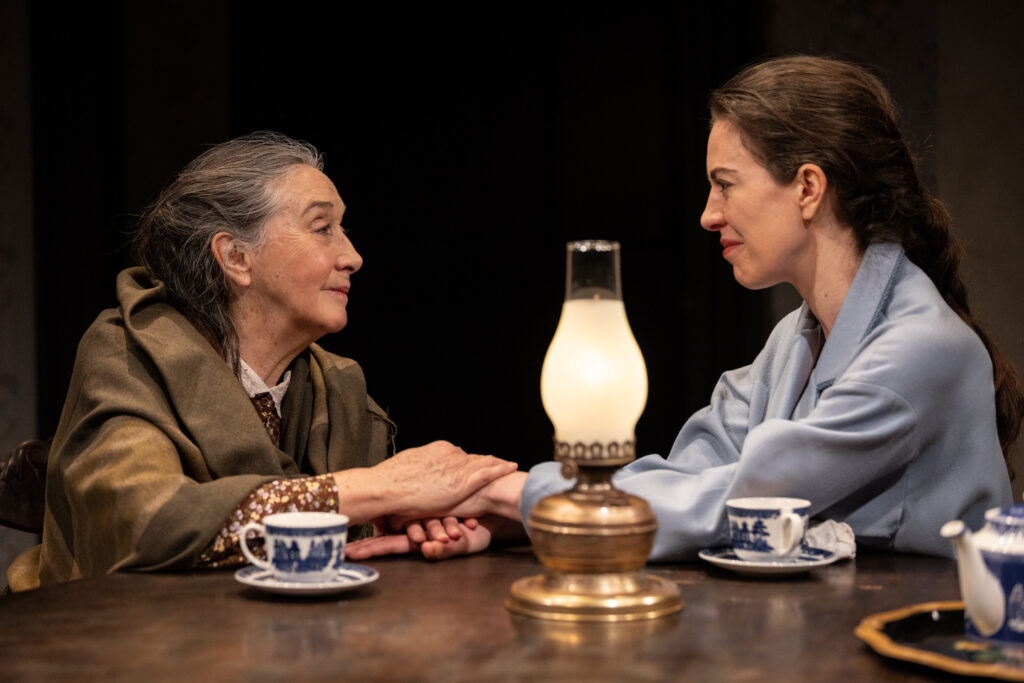

While much of the power struggles in The Daughter-in-Law run psychologically deep, they’re expressed on a transactional level. How much will Bertha receive for being wronged? And who will pay that literal price? It happens that Minnie has received an inheritance, a circumstance with which she entices Luther to marry her. But switching the roles of financial dominance drives a wedge between the couple. As the bitterness between them grows, one might wonder what the genteel Minnie sees in Luther. Unfortunately it isn’t entirely clear because the better nature of Luther is obscured by Coiner’s playing him as a complete brute. There’s a softness to Luther, a contrast to his boorish side. That push-pull is also mirrored in Minnie, who in her way can be as intractable as she can be yielding.
There’s no question that the women in The Daughter-in-Law are strong characters. Those women of the mines were the anchors of the family while their menfolk worked punishing hours in the pit. Yet, women were nonetheless dependent on what little the male breadwinner could bring home. In The Daughter-in-Law, Lawrence began to explore the sexual politics he developed in later work, particularly the nature of masculinity. A close look at The Daughter-in-Law does reveal ambiguity about feminism. He once wrote “All women in their natures are like giantesses. They will break through everything and go on with their own lives,” but as his body of work grew, Lawrence was also accused of using his female characters to promote his firm belief of male supremacy.
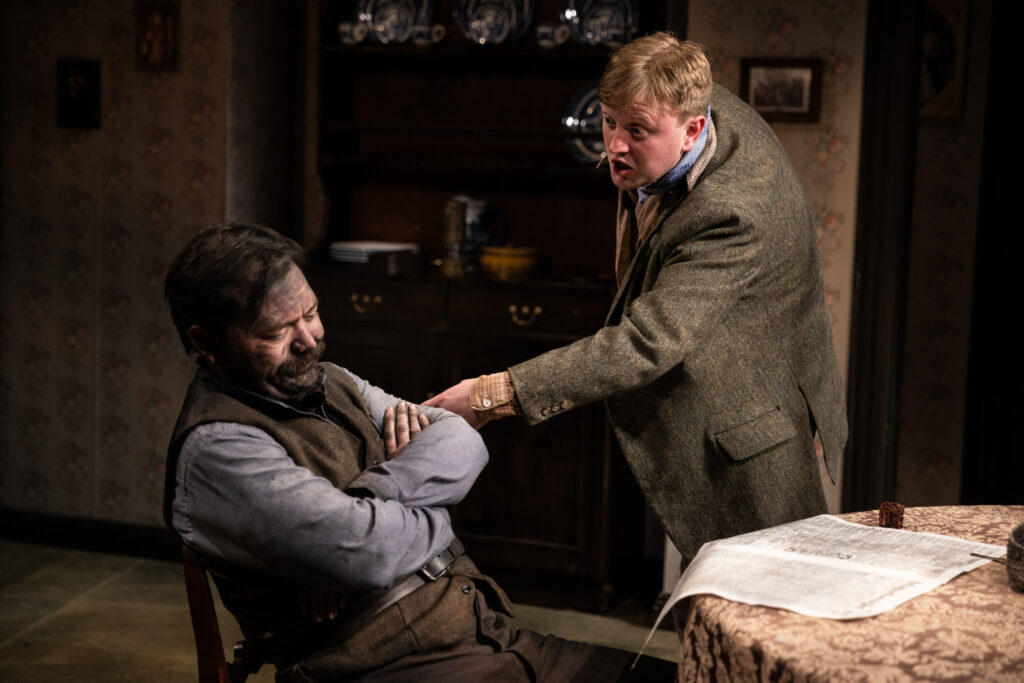

The dynamics of The Daughter-in-Law more than a century on, lay bare the notions that some things don’t necessarily change—a universality that’s made the play a popular choice for revival. Beneath the deliberate spareness of the plot, there is a shrewdness and complexity to the psychological weave of emotions and motivations revealed. While Luther and Minnie spar, as many a modern couple might today, it’s not with the venom that informed another modernist work about marital strife—August Strindberg’s intensely pointed, The Dance of Death (written in 1900 and a precursor to Edward Albee’s Who’s Afraid of Virginia Woolf?). Unlike the brutality by both partners depicted by Strindberg, the distance between Luther and Minnie is a chasm that’s eventually closed by a happy ending. Yet, the question has to be asked, will that resolution stick? Given all that’s come before, Lawrence casts a seed of doubt. It’s human nature.
Also in the cast is Seth Andrew Bridges in a brief role as a cabman. Holly Poe Durbin designed the period costumes with flair, while Jeff Nellis designed lights and Lindsay Jones sound.
Photos: Maria Baranova
(Lead Photo: Tom Coiner & Amy Blackman)
The Daughter-in-Law runs through March 20th at New York City Center Stage II – 131 W 55th St (between 6th & 7th avenues), NYC. Running time 2:30 minutes including one intermission after the first 90 minutes. For more information and tickets, go to https://minttheater.org


